Remember all the way back to March 3? There were only 124 confirmed coronavirus cases in the United States (there are now more than 10,000), and Americans were only just beginning to learn what “social distancing” means. In the very early morning hours of that seemingly-distant day, the citizens of Middle Tennessee faced a disaster that we knew how to handle.
From the very first moments that we knew tornadoes had been spotted, including even in downtown Nashville, a sleeping city sparked to life. Local reporters raced into danger to cover the path of the storm. Through phone, text, and social media, a web of alerts spread across the region, and people raced into the safest spaces of their home. Then, when it was over, first responders were on scene when downed power lines were still sparking. Men and women ran to the wreckage of neighbors’ homes, and immediately began clearing the rubble in a desperate effort to save lives.
Within hours after daylight, volunteers were swarming the worst-hit areas. Some worked on clearing rubble, some provided food and clothing to homeless families, and some provided essential spiritual help, praying with weeping men and women who’d lost everything.
From the moment that the tornado sirens started howling, I knew all of those things would happen. At our best, we’re a people of action. From the mass enlistments after Pearl Harbor, to the extraordinary volunteer efforts after natural disasters, to an all-volunteer military sustaining an almost 20-year fight after 9/11, Americans do things.
One of my favorite recent examples of the American spirit in action is the Cajun Navy, the Louisiana citizens who reacted to terrible local Louisiana flooding by bringing their own boats into the rescue effort and then—later—moving en masse to Houston to assist in Hurricane Harvey rescue and recovery efforts. One of my favorite images of the Cajun Navy is of a line of pickup trucks and fishing boats, moving as one to Houston to help Americans in need:
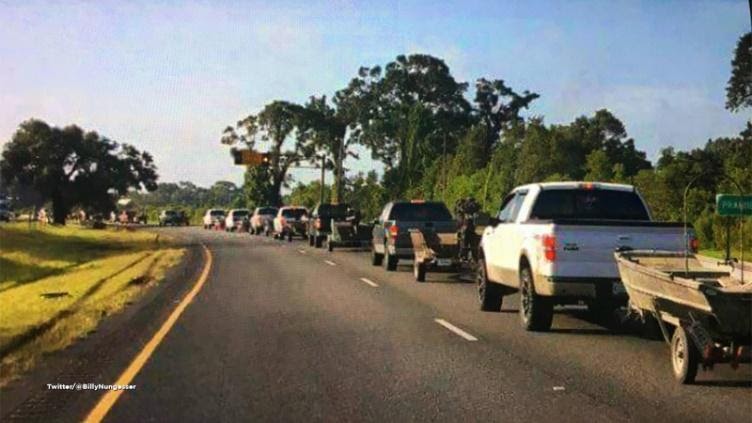
Why bring this up? Because it’s important to understand how much self-isolation, furloughs, and inactivity are contrary to the American spirit. When young kids turn to their elders and ask what they did during wars and other natural disasters, there’s a tale to tell.
“Grandpa, what did you do after 9/11?”
“When the rubble was still smoking, we ran down to Ground Zero and did everything we could. Your uncle and I enlisted, and we were in Afghanistan two years later.”
“Grandpa, what did you do during Hurricane Harvey?”
“We saw the water rise, got the boat off the trailer, and spent the next three solid days rescuing people and making sure that everyone was out of the worst-flooded neighborhoods.”
“Grandpa, what did you do during the Coronavirus Quarantine?”
“Well, your grandma and me binge-watched Breaking Bad, conserved toilet paper, and texted your great-grandpa every day to make sure he had enough beans and rice.”
One of these things is not like the other. The need for social distancing and isolation in the face of a pandemic is colliding with the American desire for decisive action. The American spirit of self-reliance and our increasing distrust of institutions is colliding with the necessity for trust even when the danger isn’t obvious. Moreover, we’re struggling with the idea that our normal defiance could exacerbate the crisis. By the time the need for isolation is obvious to all (in an Italy-scale disaster), it will be too late.
Thus, I can’t help but think we’re in a race—we must flatten the curve before our national restlessness becomes too great to contain. After all, men and women have lost their jobs when their workplaces were thriving, when they feel fine, and no one they know is sick. This takes an immense psychological (and, through stress, physical) toll on American families.
This reality is one reason why I’m in favor of an immediate cash infusion to American families. It can help with the stress. It’s an important and concrete measure of social solidarity. It cannot, however, help with the restlessness. It cannot help with the sense that a government few people fully trust is voluntarily and intentionally plunging the nation into a recession (or depression) that will change American lives for years to come.
It may be difficult—especially as increasingly widespread testing is only just now giving us a sense of the virus’s spread in the United States—but it will be important for public officials at all levels, as soon as they can, to describe what the endgame looks like. If we continue to pull together—if we pay the price now—can we hasten the end of our isolation?
On the front end of the crisis our challenge has been clear—make the nation aware of the danger and need for sacrifice. Flatten the curve. That’s where we are now. On the back end, the challenge might be different—understanding that while we (God willing) avoided the cataclysm, some risks must be borne to maintain and preserve the indomitable spirit of the American people and American economy.
The “Chinese virus” and manufactured outrage.
If you’re on Twitter or following conservative media at all, you’re by now fully aware of the food fight over whether it’s racist to call COVID-19 the “Chinese virus” or the “Wuhan virus.” My basic feelings about the controversy are pretty simple. First, it’s vitally important to confront Chinese propaganda regarding the virus. Here’s a choice example:
We should confront this nonsense vigorously and directly. It cannot be allowed to stand. But, at the same time, American journalists dunking on each other on Twitter about the best name for the virus—or asking the president about the name of the virus in press conferences—strikes me as not just colossal waste of time, but as a sign of how various public voices can’t seem to stop initiating and manufacturing cultural conflict even in a time of crisis.
The Chinese don’t “win” if we continue to call the virus COVID-19. The left doesn’t “lose” if Americans say Wuhan virus.
But I do want to point out how sideshows are used to wrongly inflame the most partisan Americans into a state of unjust fury. The method goes like this — highlight the words and actions of individual reporters and individual pundits, ascribe their words and actions to the media as a whole, then (once again) pit “the media” versus the people to maintain a state of perpetual outrage.
This tweet below, from a radio host and frequent Fox guest, is a textbook example of the phenomenon. He sent this to his 1.5 million followers:
Spend any time reading the outrage merchants on the right, and you’ll be stunned at the sheer amount of time they’re spending addressing the “Chinese virus” controversy. But just for kicks, I thought I’d take a moment and call Bongino’s bluff. Are the liberal media’s priorities right now really pumping Chinese propaganda and dunking on Trump?
I went to the home pages of the New York Times, Washington Post, CNN, and MSNBC to see exactly how much of their coverage at this moment is pumping Chinese propaganda or dunking on Trump. Here’s what I found:
New York Times: I found no less than 30 COVID-19 stories on the front page. Two opinion pieces are critical of Trump and one analysis faults American preparation. Not one of the stories is dedicated to the “Chinese virus” controversy.
Washington Post: I counted 22 relevant stories on the front page. Two pieces were clearly critical of Trump. Not one of the stories was dedicated to the “Chinese virus” controversy.
CNN: I found the first example of a story dedicated to the “Chinese virus,” after scrolling past almost 50 COVID-19-related headlines. Homepages change constantly, but I saw five Trump-critical stories.
MSNBC: I stopped counting after scrolling past 50 COVID-19 headlines. There was one story and one brief news clip about the “Chinese virus” controversy. Unsurprisingly, I saw the most Trump-critical stories on the site with six that clearly critiqued Trump or his administration.
It seems as if Bongino’s assessment of media priorities is just flat wrong. Moreover, ironically enough, one of the best videos I’ve watched that rebuts Chinese propaganda comes from — surprise, surprise — the New York Times.
This is one reason why many mainstream media figures I know are utterly baffled by the claim they see all over social media from the right that “you” are out to get “us.” No, I’m not saying that the mainstream media doesn’t have problems. Left-leaning monocultures create rather severe blind spots. There are some truly bad actors in the press (as there are in every industry). The media has always been vulnerable to sensationalism. But the media as a whole simply doesn’t operate with monolithic malice against half the country..
Moreover, there are now many millions of Americans who no longer consume mainstream media but rather gain their perceptions about its work and its priorities almost exclusively from the media’s vocal conservative critics on Fox, talk radio, and Twitter.
Thus, they’re exposed to a media diet that highlights every MSM mistake, often ascribes motives to the media that don’t exist, and typically ignores the vast bulk of the media’s work. Conservatives have created an outrage industry that’s lucrative for its participants but destructive to our nation.
So, what should we do with those individual media figures who interrupt vitally important briefings to feed culture war conflicts? I agree with A.G. Hamilton. Ignore them. They’ve signaled that they don’t appreciate the gravity of our times:
One last thing …
While we’re in the midst of our massive collective sports withdrawal, can I suggest an outstanding Twitter follow? Follow Super 70s Sports, and enjoy classic content like this. Stay safe and healthy Dispatch members, and I’ll see you again on Sunday.
Photograph of an empty subway station in Brooklyn, N.Y., by Angela Weiss/AFP/Getty Images.


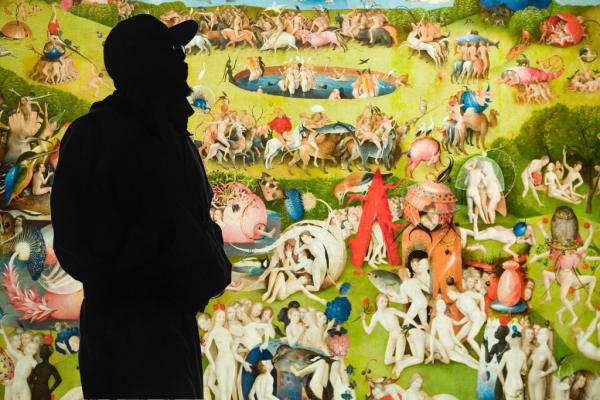
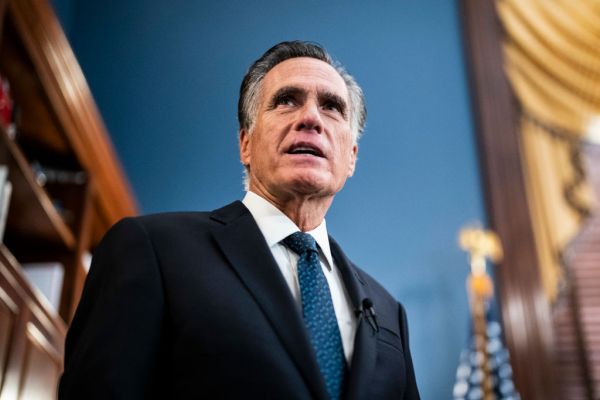

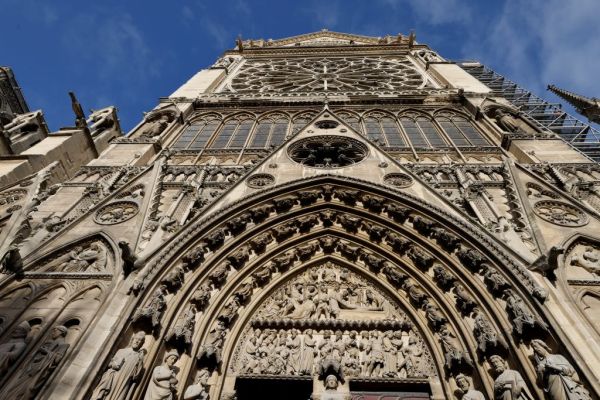
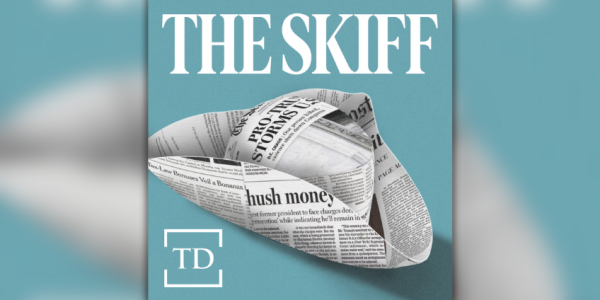
Please note that we at The Dispatch hold ourselves, our work, and our commenters to a higher standard than other places on the internet. We welcome comments that foster genuine debate or discussion—including comments critical of us or our work—but responses that include ad hominem attacks on fellow Dispatch members or are intended to stoke fear and anger may be moderated.
You are currently using a limited time guest pass and do not have access to commenting. Consider subscribing to join the conversation.
With your membership, you only have the ability to comment on The Morning Dispatch articles. Consider upgrading to join the conversation everywhere.